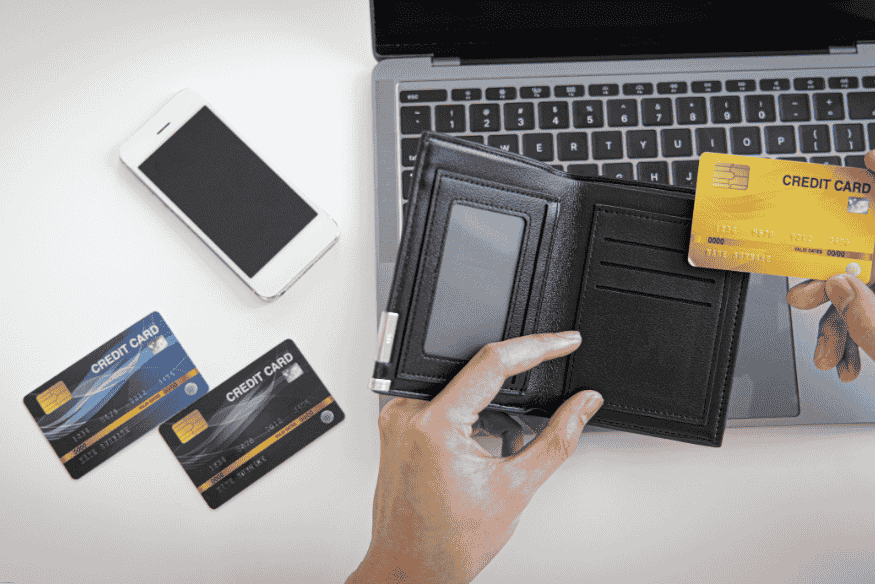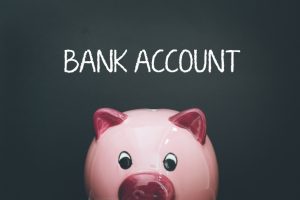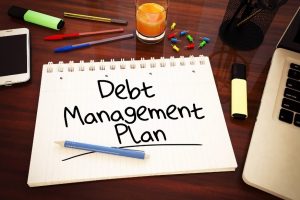Achieving financial freedom begins with managing your debt. Paying off your credit card balance is key to a better financial future.
Recent data shows a positive trend: U.S. credit card debt dropped to $1.18 trillion in the first quarter of 2025. This decrease shows many are successfully handling their debt.
To follow their lead, you need a good plan and discipline. In this article, we’ll look at effective ways to pay off your credit card debt and reach financial freedom.
Key Takeaways
- Understand your current debt situation to create an effective plan.
- Explore different strategies for paying off your credit card balance.
- Discover the importance of discipline in achieving financial freedom.
- Learn how to avoid common pitfalls that can hinder your progress.
- Find out how to maintain momentum and stay on track.
Understanding Credit Card Debt in Finland
Credit card debt in Finland is complex. It’s influenced by many factors. To handle your debt well, knowing about credit card interest and carrying a balance is key.
How Credit Card Interest Works
Credit card interest is charged if you don’t pay in full by the due date. Interest rates vary a lot. In Finland, these rates can be high. So, it’s best to pay off your balance every month.
The True Cost of Carrying a Balance
Carrying a balance increases what you owe due to interest. For example, a 20% interest rate on a €1,000 balance for a year adds €200 in interest.
| Balance (€) | Interest Rate (%) | Interest Charged (€) | Total Owed (€) |
|---|---|---|---|
| 1,000 | 15 | 150 | 1,150 |
| 1,000 | 20 | 200 | 1,200 |
| 1,000 | 25 | 250 | 1,250 |
Finnish Credit Card Market Specifics
The Finnish credit card market has its own features. This includes average interest rates and bank practices. Knowing these can help you manage your debt better. For instance, some Finnish banks offer good interest rates, but always check the fine print.
Understanding credit card interest, the cost of carrying a balance, and the Finnish market specifics helps you manage your debt. It also helps you make smart financial choices.
Assessing Your Current Financial Situation

Before you can tackle your credit card debt, you need to know your financial status. You must gather info on your income, expenses, and debts. This will help you see where you stand financially.
Taking Inventory of All Your Credit Card Debt
Begin by listing all your credit cards. Note their balances, interest rates, and minimum payments. This credit card debt inventory will show you the extent of your debt. Make sure to include cards with zero balances if you use them often.
Calculating Your Total Debt and Interest Costs
After making your list, add up the balances of all your credit cards. Then, find out the total interest you pay each year. This is done by multiplying each card’s balance by its interest rate. This will give you a clear view of your total debt and the interest costs.
Determining Your Debt-to-Income Ratio
To see how your debt affects your finances, calculate your debt-to-income ratio. Divide your total monthly debt payments by your gross monthly income. A lower ratio means better financial health. Knowing this ratio helps you decide if you need to cut spending or increase income to manage your debt.
Creating a Realistic Repayment Plan
Starting to pay off debt begins with a solid plan. You must set clear goals, manage your budget well, and keep track of your progress.
Setting Achievable Payoff Goals
First, figure out how much you can pay each month. Look at your income, expenses, and other financial duties. Set a specific payoff goal, like paying off a certain amount in a few months or a year. This keeps you focused and motivated.
Budgeting for Debt Repayment
Make a budget that includes money for debt repayment. Cut back on unnecessary expenses and use that money for your debt. Follow the 50/30/20 rule: 50% for needs, 30% for wants, and 20% for savings and debt.
Tracking Your Progress
It’s important to keep an eye on how you’re doing. You can use digital tools or write it down by hand.
Digital Tools for Debt Management
Many apps and websites can help you track your spending, budget, and debt repayment. Mint, You Need a Budget (YNAB), and Credit Karma are some good choices.
Manual Tracking Methods
If you like doing things the old-fashioned way, use a spreadsheet or a debt repayment journal. Regularly update your records to stay motivated and make changes if needed.
Proven Strategies to Pay Off Credit Card Balances
To tackle your credit card debt, consider the Avalanche Method or the Snowball Method. Both offer structured ways to pay off your debt.
The Avalanche Method
The Avalanche Method focuses on paying off your credit card debts one by one. You start with the card that has the highest interest rate.
How It Works
You make the minimum payment on all cards except the one with the highest interest rate. Pay that card off as aggressively as you can. Once that card is paid off, move to the next highest rate, and so on.
Benefits and Challenges
This method can save you money in interest over time. However, it can be tough if you have many cards with similar high interest rates. It may take a while to see progress.
The Snowball Method
The Snowball Method focuses on eliminating your smallest credit card balances first, regardless of the interest rate.
Step-by-Step Implementation
Start by making the minimum payment on all cards except the one with the smallest balance. Pay off that card as quickly as possible. Once it’s paid off, move to the next smallest, and so on.
Psychological Advantages
The Snowball Method gives you a psychological boost. You quickly eliminate smaller debts and see progress. This can be motivating and help you stay on track.
Choosing the Right Approach for Your Situation
Both methods have their merits. The best choice for you depends on your financial situation and personal preferences. If saving money on interest is important, the Avalanche Method might be better. If you prefer quick wins for motivation, the Snowball Method could be more effective.
| Method | Focus | Benefits | Challenges |
|---|---|---|---|
| Avalanche | Highest Interest Rate | Saves money on interest | May take longer to see progress |
| Snowball | Smallest Balance | Quick wins, psychological boost | May cost more in interest |
How to Negotiate with Credit Card Companies
Talking to your credit card company can really help with your debt. You might get lower interest rates, find hardship programs, or even settle your debt.
Requesting Lower Interest Rates
Getting a lower interest rate is easy. Here’s how:
- Call your credit card company’s customer service number.
- Tell them about your financial situation and your plan to pay off your debt.
- Mention your good payment history if you have one.
Exploring Hardship Programs
If money is tight, look into hardship programs. These can pause or lower your payments for a while.
Settlement Options for Serious Debt Problems
For really big debt, you might settle with the company. This means paying a smaller amount than you owe.
Debt Consolidation Options for Finnish Consumers

Debt consolidation can help if you’re juggling many credit card debts. It simplifies your payments and might lower your interest rate. This can make managing your money easier.
Balance Transfer Credit Cards Available in Finland
Balance transfer credit cards are a good choice for consolidating debt. They let you move your balances to one card, often with a lower or 0% interest rate. Popular banks in Finland, such as Nordea and Danske Bank, offer competitive balance transfer deals. But, remember to check the fees and how long the low rate lasts.
Personal Loans from Finnish Banks
Personal loans from Finnish banks are another option. Lenders like OP and S-Bank offer loans with fixed rates and terms. They can make your debt easier to manage with a single, predictable payment each month.
Home Equity Options in the Finnish Market
Homeowners can also use home equity for debt consolidation. Home equity loans or lines of credit let you borrow against your property’s value. This might have lower rates, but remember, your home is at risk.
Comparing Consolidation Costs and Benefits
When looking at debt consolidation, think about the costs and benefits. Look at the total interest, any fees, and how it affects your monthly budget. By carefully considering these, you can decide if consolidation is right for you.
Finding Extra Money to Pay Off Credit Card Debt
To pay off credit card debt faster, you need to find extra money. You can do this by cutting unnecessary expenses, increasing your income, or selling unused items.
Cutting Unnecessary Expenses
Start by identifying non-essential spending. Look at your budget to find where you can spend less.
Identifying Non-Essential Spending
Keep track of your daily spending. Use a budgeting app or spreadsheet to help.
Creating a Temporary Austerity Plan
Make a plan to cut back. Stop eating out, cancel unused subscriptions, and reduce entertainment costs.
Increasing Your Income
More income means more money for debt. Look into side hustles compatible with the Finnish tax system, like freelancing or part-time jobs.
Side Hustles Compatible with Finnish Tax System
Try ride-sharing, tutoring, or selling handmade goods. Make sure you know the tax rules for your side hustle.
Asking for a Raise or Promotion
If you can, ask for a raise or promotion at work. This can increase your income.
Selling Unused Items
Selling items you no longer need can also help. Use platforms like Verkkokauppa or local flea markets.
| Strategy | Description | Potential Savings/Income |
|---|---|---|
| Cutting unnecessary expenses | Reduce non-essential spending | €100-€500 per month |
| Increasing income through side hustles | Freelancing, part-time work | €200-€1000 per month |
| Selling unused items | Sell items online or at flea markets | €50-€500 one-time |
Common Mistakes to Avoid When Paying Off Credit Cards
Clearing your credit card debt needs a smart plan. It’s key to know the mistakes that can slow you down. When you’re working to pay off your balance, watch out for these pitfalls.
Continuing to Use Credit Cards While Paying Them Off
One big credit card mistake is using your cards while paying them off. This can trap you in a cycle of debt. It’s important to use your cards less to make real progress.
Making Only Minimum Payments
Only paying the minimum payments can make your debt last longer. It might seem like an easy fix, but it costs more in interest. Try to pay more than the minimum to cut down your debt faster.
Closing Accounts Immediately After Paying Them Off
Some think closing cards after paying them off is smart. But, it can hurt your credit score and usage ratio. It’s usually better to keep old accounts open, even if they’re paid off.
Ignoring the Underlying Spending Issues
Paying off your debt without fixing your spending habits can lead to more debt. It’s crucial to find and solve the spending problems to stay financially stable in the long run.
Finnish Financial Support Systems for Debt Management
If you’re struggling with debt, Finland has help. They offer systems to regain control. These resources assist and guide you, making debt management easier.
Government Programs and Resources
The Finnish government has programs for debt help. They include financial counseling and debt restructuring. You can find these services at local municipalities or government agencies.
Takuusäätiö (Guarantee Foundation) Services
Takuusäätiö provides debt counseling and restructuring. They offer a safety net for those in financial trouble. They help you navigate debt and find stability.
Non-Profit Debt Counseling Services
Non-profit groups in Finland offer free or low-cost counseling. They help you understand your finances, create a budget, and pay off debts. Debt counseling is a valuable tool for financial freedom.
Legal Aid for Serious Debt Problems
For severe debt issues, legal aid is available. It covers debt negotiations, bankruptcy, and legal matters. Seek help from legal aid offices or debt law attorneys.
Using these support systems is a step towards managing debt and financial stability.
Building Healthy Financial Habits After Debt
Paying off debt is a big win, but it’s key to keep good financial habits to stay debt-free. These habits help you stay financially stable and free for the long term.
Creating an Emergency Fund
An emergency fund is vital to avoid more debt when unexpected costs come up. Try to save 3-6 months’ living expenses in an easy-to-access savings account.
Tracking Your Spending
Knowing where your money goes is crucial for good financial habits. Use a budgeting app or spreadsheet to track your spending.
Using Credit Cards Responsibly
Credit cards can be helpful if used wisely. Always pay your balance in full each month and don’t spend more than you can afford.
Setting Up Automatic Payments
Automating payments helps you never miss a payment. Set up automatic transfers for your bills and debt payments.
To improve your financial health, regularly review and adjust your budget. For more debt management tips, check out Career Contessa.
| Category | Monthly Spend | Annual Spend |
|---|---|---|
| Groceries | $500 | $6000 |
| Entertainment | $200 | $2400 |
| Transportation | $300 | $3600 |
By following these steps and keeping good financial habits, you can look forward to a stable financial future.
When to Consider Professional Help

Knowing when you need help with credit card debt can save you money and time. Managing debt is complex and sometimes, you need more than just DIY solutions.
Signs You Might Need Credit Counseling
If you’re struggling to make payments or getting constant calls from creditors, it’s time to seek credit counseling. These services can help you create a plan to manage your debt.
Finding Reputable Financial Advisors in Finland
When searching for financial advisors in Finland, look for those linked to organizations like the Takuusäätiö (Guarantee Foundation). They offer advice tailored to your financial needs.
What to Expect from Professional Debt Services
Professional debt services first evaluate your financial situation. Then, they create a plan to help you pay off your debt. They might also talk to creditors to lower interest rates or fees.
Costs and Benefits of Professional Assistance
Getting help from professional debt services might cost money, but the benefits are worth it. You’ll get less stress, a clear repayment plan, and could save a lot on interest and fees.
Conclusion: Your Path to Financial Freedom
Getting to financial freedom is a journey. It involves paying off debt and building good financial habits. Sometimes, you might need professional help.
Understanding your credit card debt is key. Creating a solid repayment plan is also important. Avoiding common pitfalls is crucial too.
By using strategies like the avalanche or snowball method, you’re making progress. Negotiating with credit card companies and looking into debt consolidation are big steps. Stay focused on your goals and celebrate your successes.
Remember, financial freedom is not just about paying off debt. It’s also about building a better financial future. With determination and the right tools, you can beat your debt and enjoy financial peace.









